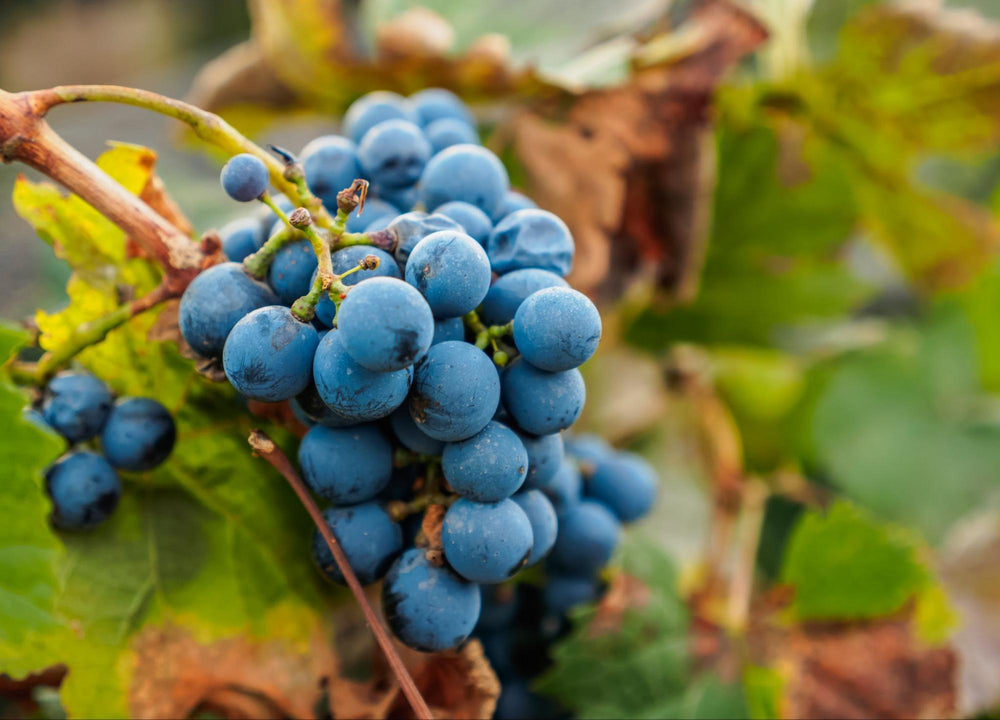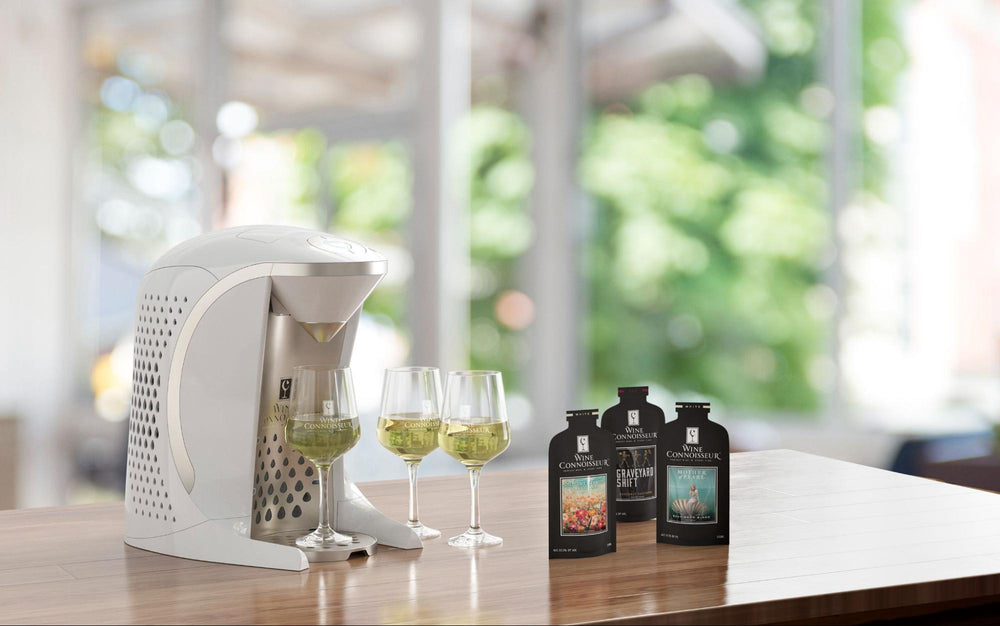A Comprehensive California Wine Guide

Just how widespread is Californian wine?
Well, if you’re drinking American wine, chances are you’re drinking Californian wine.
Nearly 90% of all American varietals are produced in California, making it the fourth-largest winemaking district around the globe. The region generates over $30 billion in revenue for the state and continues to grow year over year.
But what makes California one of the most coveted and rich wine regions in the western hemisphere? And how does it compare to more historic Old World wine regions?
Grab a glass of your favorite varietal and read on to learn all about the Golden State’s winemaking from its rough-and-tumble history, to its rolling topography, to a deeper exploration of the top districts within this rapidly growing wine region.

The Signature of California Wine Country
What separates Californian wine from those grown in the Pacific Northwest or even those grown throughout the New World from Australia to South Africa?
One of the keys to California’s success in the wine world lies in its climate. The temperate, Mediterranean weather mirrors many of the most prestigious wine regions in Europe, marked by warm, dry summers and cool, comfortable winters.
Freezing temperatures are rare, even among the mountainous regions lining the northern coast.
Northern California’s cooler climate usually leads to lower yields compared to its sister vineyards in the south. Although, cooler temperatures also lead to longer times on the vine, infusing sweeter, tannin-heavy wines that are some of the most premium vintages in all of the world’s viticulture.
California’s unique terrain also makes it prime for winemaking, with rolling hills and yawning valleys stretching throughout the North and Central coasts.
The picture changes once you venture to the southern regions of this state’s wine country; California’s flatter topography in the lower half of the state can lend to juicy, ripe grapes as the hotter summers and more forgiving winters tend to lead to warmer-climate varietals.
The soil in northern California represents a distinct cross of volcanic red and white clay and sandstone. The farther south you venture, the more clay you’re likely to find in the earth.
What really separates California from many other wine regions is its commitment to organic practices. Nearly a quarter of the vineyards stretching throughout the Golden State follow organic or biodynamic standards, adhering to sustainability standards and quality thresholds.
This commitment is paramount due to California’s ongoing struggles with water shortages and wildfires ravaging the state’s natural landscape in the dry summers. Indeed, many vineyards in the south-central coast region have even begun following a relatively new growing technique known as dry farming.

The History of Californian Wine
From humble beginnings to its modern, teeming landscape, the history of California viticulture is as rich and storied as the state itself.
California’s winemaking culture first proliferated in the late 18th century. Spanish Franciscan missionaries migrated to the area and developed thousands of acres of vineyards to produce wine for the sacrament of the Holy Communion.
Over the years, some priests on the creative side expanded their scope to develop wines past the bare minimum of flavor, including many red and white wine grapes that can still be found in the area today.
Growth in the Gold Rush
However, it wasn’t until the Gold Rush of 1848-1855 that the golden state’s wine industry truly exploded. Tens of thousands of migrants rushed into the state each year, seeking their slice of the economic boom.
Modern regions like Napa Valley and Sonoma County expanded their winemaking industry to meet the growing demand for prospectors and their families. As immigration sharply fell with the end of the Gold Rush, these burgeoning vineyards slowly turned their attention to capturing the global wine market, though they were frequently ignored for the more respected Old World wines of France and Italy.
Of course, everything came to a screeching halt in 1919 with the institution of Prohibition. For the 14 years, the ban stood prior to repeal, Prohibition led to a nosedive in the quality of wine produced all throughout the country, particularly wreaking havoc on the California vineyards still trying to find their footing in a competitive global market.
Even after Prohibition was repealed in 1933, California vineyards would not truly recover for another forty years in 1976.
Cue the “Judgment of Paris.”
The Judgment of Paris
In a blind wine taste test, French judges pitted their native wines against those cultivated all across the globe to prove their homeland’s natural superiority and terroir.
It was a bit of a shock when the wines that scored highest in “Chardonnay” and “Red Wine” were revealed to originate from none other than the Golden State.
From that point onward, California’s wine culture skyrocketed to become the world’s fourth-largest wine producer, an incredible accomplishment for such a newcomer when compared to the regions with an extra two or three thousand years of winemaking history under their belt.
California’s wine history is far from over. With ever-increasing technological innovation and increased connection to the Golden State’s soil, there’s much more to come from this growing wine region.

The Wine Regions of California
Now that we’ve covered California’s growing winemaking history and the unique climate and soil characteristics of the Golden State, let’s dive a bit deeper into the qualities that define three of California’s top wine regions.
Napa Valley
This region is one of the most well-known wine regions in the Western hemisphere. Its unique climate and passionate winemaking tradition create a natural oasis for the growth and innovation of Californian viticulture.
Nestled in California’s central valley, about an hour north of San Francisco, this growing area is nestled between the Vacas mountain range to the east and the Mayacamas in the west.
This geographical positioning lends to a temperate Mediterranean climate characterized by cool mornings and warm, dry afternoons. A mix of volcanic and clay-enriched soils creates ideal growing conditions for a vast spectrum of bright, acidic grapes.
Some of the top varietals to sample in Napa Valley are the region’s classic take on Chardonnay, bright Sauvignon Blanc, and robust Cabernet Sauvignon.
Sonoma County
Covering vast swaths of land on an incredibly wide array of soils, Sonoma County is synonymous with premier Californian wine.
Situated just west of Napa Valley, this large growing region encompasses a wide range of climes and growing conditions. The warmer temperatures of central Sonoma wineries are great for warmer-climate varietals like Merlot and Malbec, while the cooling sea breeze of coastal wineries provides the perfect nourishment for those cooler-climate varietals.
The secret to Sonoma’s success lies in its diverse soils. Traversing the region, you’ll find free-draining sandy loam, rocky, and volcanic soils situated alongside limestone and clay-enriched earth.
This provides a wide palate and near-infinite canvas for master winemakers to work their magic, getting the most from every grape, as evident in our DeLoach varietals from a perfect Pinot Noir to elevating Chardonnay to uncharted balance and taste.
Sonoma County is world-famous for its wide array of ravishing reds. If you’re traveling through, try a sample of a local winery’s delicate Pinot Noir, fruity Red Zinfandel, or bold and peppery Syrah.
Mendocino
This northern California wine region is sandwiched between the Navarro River and the Pacific Ocean, offering cool and foggy mornings with temperate, sunny days.
The Mendocino counties are marked by a delicate mix of alluvial and loamy soils, providing the perfect base for cool-climate grapes to thrive close to the ocean suffused with a constant Pacific sea breeze.
The shorter growing season here lends to smaller, independent wineries that are worth a visit on your next Pacific road trip.
Mark up your Mendocino winery bucket list with classic California varietals like Chardonnay and Pinot Noir along with a delightfully dry Riesling.

Capture California with the Wine Connoisseur
From its humble traditions as run-of-the-mill Sacrament wine to the shock of the Judgment of Paris in 1976 to its thriving modern economy, Californian wine has endured many twists and turns in its relatively short history.
Despite the struggles and strife, California was always destined to be great. The temperate climate, diverse topography, and rich soil ensured that this wine region would become one of the most coveted all across the globe.
With a rich history of popular varietals like Chardonnay and Pinot Noir and constant innovation of winemaking technology and techniques, the booming economy of California wine shows no signs of slowing down.
So, go ahead. Take a sip of California. Explore the winding roads of the North Coast and put your feet up at a local, independent winery.
Better yet — do it from the comfort of your home kitchen.
With the Wine Connoisseur personal sommelier system, you’ll never have to stress to get the best from your wine again. Using our simple and sustainable wine sachets, this personal sommelier calibrates your favorite California varietal to its optimal oxidation and serving temperature.
It’s the perfect sip at the push of a button.
Explore our DeLoach varietals for mouthwatering wine from a historic Sonoma County vineyard, served to excellence with the help of a master sommelier that fits beautifully on your kitchen counter.
While you’re waiting for your sachets to arrive, browse our blog to learn even more about your favorite varietals and the unexpected importance of the shape of your glass for your next wine night.



